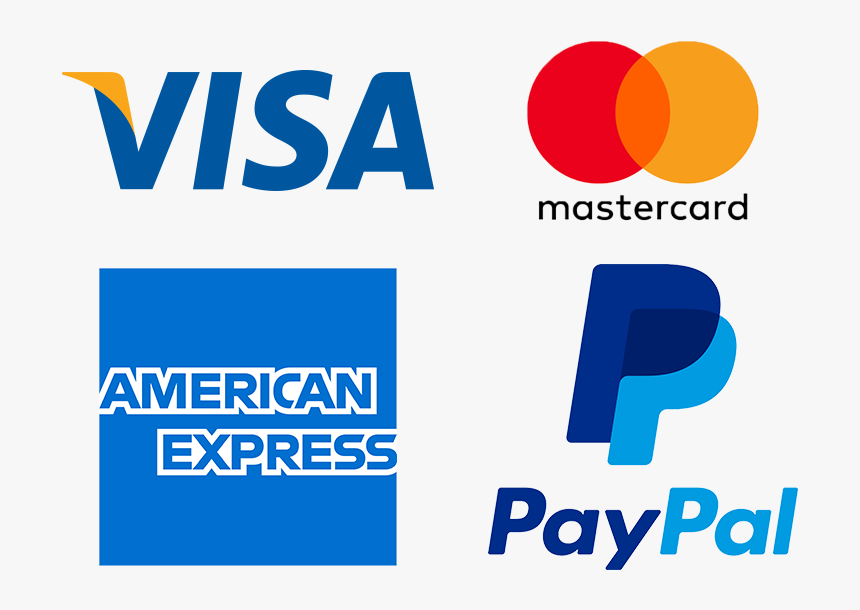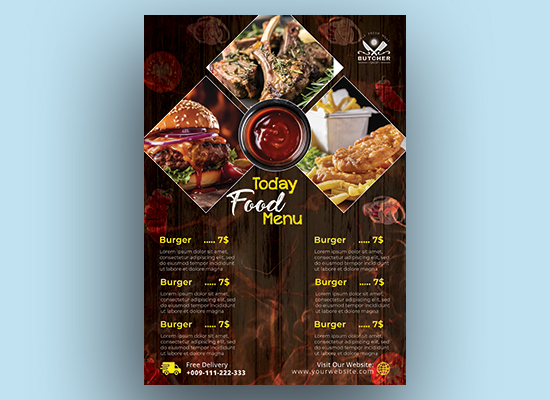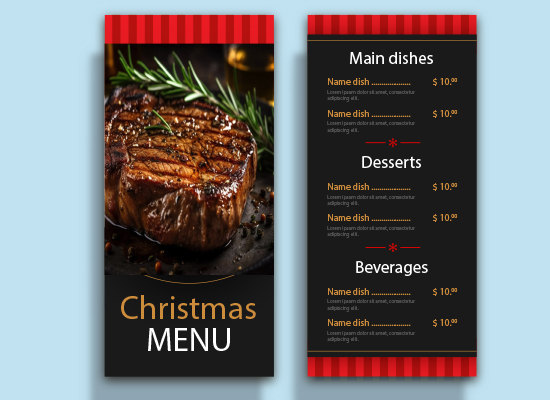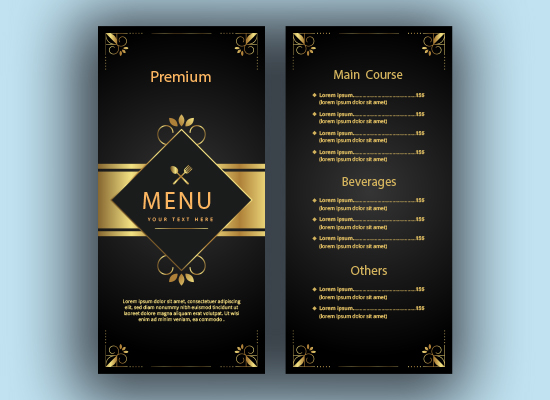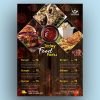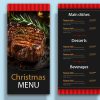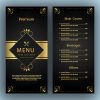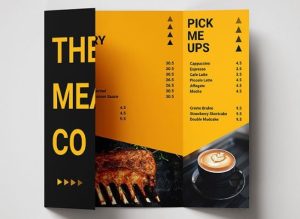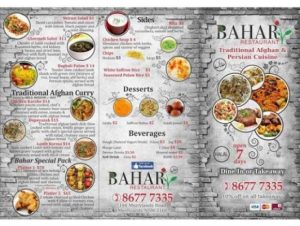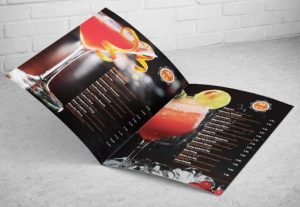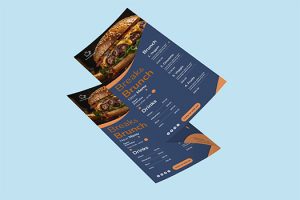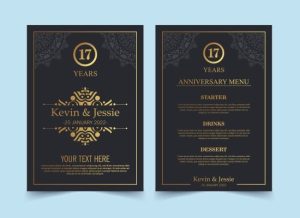Dine In Menu
Please select artwork files:

Related Products
Additional Information
With a custom dine in menu elevate your dining experience. Stylish, clear, and inviting, perfect for showcasing your dishes and enhancing ambiance.
Dine-In Menu: The Gateway to Your Restaurant Experience
A dine in menu is more than just a list of dishes—it’s a key part of the customer’s dining experience that defines your restaurant’s style, sets the tone for the meal, and influences what customers order. Whether you run a casual eatery, an upscale fine-dining establishment, or a trendy café, your menu is a vital communication tool that speaks volumes about your culinary offerings, service quality, and overall brand identity.
This guide will explore the essential elements of a dine-in menu, why it is important, tips for designing an effective menu, and how it can help elevate the customer’s experience.
The Importance of a Dine-In Menu
- Showcases Your Restaurant’s Identity:
- The dine in menu is a direct reflection of your restaurant’s personality. From the layout and color scheme to the descriptions of dishes, it gives diners insight into the type of experience they can expect.
- Whether your establishment is laid-back, sophisticated, quirky, or traditional, your menu should clearly communicate that vibe. For instance, a fine-dining restaurant might have an elegant and minimalist design with upscale dish descriptions, while a casual diner might use a more vibrant and fun approach with playful dish names.
- Guides the Customer’s Experience:
- A well-organized dine in menu helps customers navigate your offerings easily, making their dining experience smoother. By grouping similar items together, like appetizers, entrees, and desserts, diners can find what they’re looking for without confusion.
- The design of dine in menu should also subtly encourage customers to order certain dishes, perhaps through strategic placement of popular or high-margin items, enticing descriptions, or visual elements like boxes and highlighted sections.
- Highlights Signature Dishes:
- Every restaurant has a few signature dishes or best-sellers that set it apart from the competition. You dine in menu is an excellent platform for spotlighting these items, whether it’s through eye-catching placement, a brief chef’s recommendation notes, or an accompanying image.
- Featuring these dishes prominently not only boosts sales but also gives customers an idea of what your restaurant is known for, enhancing their overall perception of the establishment.
- Promotes Upselling and Special Offers:
- A dine in menu can be an effective tool for upselling. By recommending sides, beverages, or desserts that pair well with certain entrees, you can encourage customers to enhance their meal, which increases the average order value.
- Additionally, you can promote special offers like seasonal dishes, combos, or set menus. Highlighting these on dine in menu draws attention to limited-time options, creating a sense of urgency that can lead to more sales.
- Sets Expectations:
- Clear and concise menu descriptions set customer expectations for the meal. They should give enough detail about each dish to help customers make informed choices, particularly if you offer dishes that are unique or unfamiliar to your audience.
- Additionally, transparent pricing ensures that customers understand what they’re paying for, helping to avoid any potential confusion or dissatisfaction when the bill arrives.
Key Elements of a Dine-In Menu
- Menu Categories:
- A dine in menu should be divided into logical sections such as appetizers, salads, main courses, desserts, and drinks. This makes it easy for diners to navigate the offerings.
- If your restaurant offers specific options for different dietary preferences, like vegetarian, vegan, or gluten-free dishes, consider creating separate sections for these to make them more accessible to those customers.
- Item Descriptions:
- Each menu item should be accompanied by a short, descriptive blurb that highlights the key ingredients and preparation methods. Descriptions should be appetizing and provide enough information for customers to understand the dish, especially if it contains uncommon ingredients or has an unfamiliar name.
- Try to balance creativity with clarity. Descriptions should tempt diners while giving them a clear idea of what they’ll be served.
- Pricing:
- Prices should be clearly displayed and easy to find. Transparent pricing helps build trust with your customers, who want to know exactly what they’re ordering and what it will cost them.
- Pricing strategies, such as rounding numbers down (e.g., $9.99 instead of $10) or using subtle typography for prices, can influence the way customers perceive value without making them overly price-conscious.
- Dietary Icons:
- Many customers now have dietary preferences or restrictions, so including icons for vegetarian, vegan, gluten-free, or allergen-free dishes can be extremely helpful. This small addition can make a big difference for those customers who are looking for specific options.
- You might also include symbols for dishes that are spicy, chef’s specials, or local favorites, adding an extra layer of information that makes it easier for customers to decide.
- Signature and Special Dishes:
- You dine in menu is the perfect place to highlight special dishes or customer favorites. These items can be featured in a special section or visually emphasized on the page to draw attention.
- If you have seasonal offerings or limited-time dishes, make sure they stand out to encourage diners to try them before they disappear.
Tips for Designing an Effective Dine-In Menu
- Keep It Simple and Organized:
- A clean, well-organized layout is essential for a successful dine in menu. Avoid overwhelming customers with too many items or cluttered design elements.
- Stick to a clear visual hierarchy that guides customers’ eyes naturally through the sections. Use headings and subheadings to break up different categories, and leave enough white space to make the menu easy to read.
- Use Enticing Descriptions:
- Language is a powerful tool on a menu. Using descriptive and flavorful language can make your dishes sound more appealing and entice diners to try something new.
- Focus on words that highlight taste, texture, and preparation methods, like “tender,” “crispy,” “slow-cooked,” or “house-made.” These details help paint a picture of what the customer can expect.
- Choose the Right Fonts and Colors:
- Typography and color choices should align with your restaurant’s overall theme. For instance, a sophisticated bistro might use elegant serif fonts and muted, earthy tones, while a trendy café might opt for playful, modern fonts and vibrant colors.
- Be mindful of readability. Avoid overly decorative fonts or colors that are difficult to read, especially in low-light dining environments.
- Include Visual Elements:
- Visual elements like images or illustrations can add interest to your menu. If you decide to use images, make sure they are professionally shot and look appetizing. Poor-quality images can detract from the overall perception of your food.
- Alternatively, subtle illustrations or icons can add a creative touch without overwhelming the design.
- Optimize for Both Digital and Print:
- In today’s digital age, it’s essential to have a digital version of your dine-in menu. This could be accessed via a QR code, which is becoming increasingly popular in many restaurants.
- Ensure that your digital dine in menu is optimized for mobile devices—text should be easily readable, and the layout should remain intuitive and user-friendly on smaller screens.
Types of Dine-In Menus
- A La Carte Menu:
- This is the most common type of dine in menu, where each item is listed and priced individually. Customers can order dishes separately, allowing for more flexibility in customizing their meal.
- Prix Fixe Menu:
- A prix fixe menu offers a set number of courses for a fixed price. This type of menu is commonly used in fine dining establishments or for special events, offering customers a curated experience.
- Seasonal or Rotating Menus:
- Many restaurants offer seasonal or rotating menus that change based on ingredient availability or the chef’s creativity. These menus can keep things fresh and exciting for regular customers while showcasing the restaurant’s commitment to quality ingredients.
- Tasting Menu:
- A tasting menu offers small portions of several dishes, giving customers a broad overview of the chef’s specialties. This is often used in high-end restaurants to provide a full experience of the culinary offerings.
Conclusion
A dine in menu is an essential element of any restaurant, serving as a direct reflection of your brand and setting the tone for the customer’s experience. With thoughtful design, clear descriptions, and strategic organization, your menu can enhance the dining experience, promote high-margin items, and keep customers coming back for more. Whether physical or digital, the menu is a powerful tool that, when done right, can contribute to the overall success of your restaurant.
Get Your Quote
My Account
About Us
Our Products
Contact
Follow Us On
We Accept
